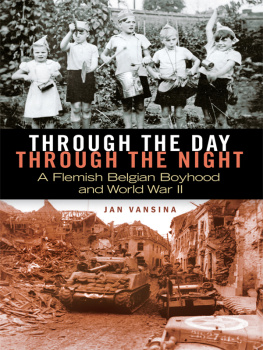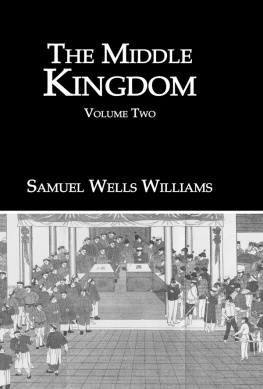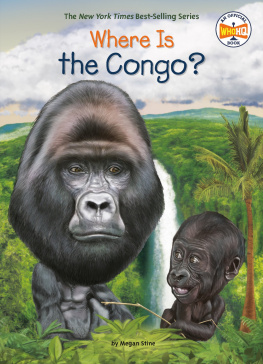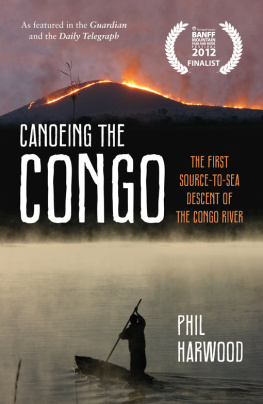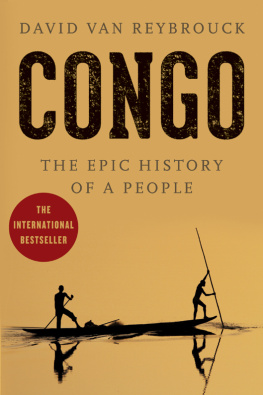AFRICAN ETHNOGRAPHIC STUDIES
OF THE 20TH CENTURY
Volume 70
THE TIO KINGDOM OF
THE MIDDLE CONGO
THE TIO KINGDOM OF
THE MIDDLE CONGO
18801892
JAN VANSINA
First published in 1973 by Oxford University Press for the International African Institute.
This edition first published in 2018
by Routledge
2 Park Square, Milton Park, Abingdon, Oxon OX14 4RN
and by Routledge
711 Third Avenue, New York, NY 10017
Routledge is an imprint of the Taylor & Francis Group, an informa business
1973 International African Institute
All rights reserved. No part of this book may be reprinted or reproduced or utilised in any form or by any electronic, mechanical, or other means, now known or hereafter invented, including photocopying and recording, or in any information storage or retrieval system, without permission in writing from the publishers.
Trademark notice: Product or corporate names may be trademarks or registered trademarks, and are used only for identification and explanation without intent to infringe.
British Library Cataloguing in Publication Data
A catalogue record for this book is available from the British Library
ISBN: 9780815387138 (Set)
ISBN: 9780429488139 (Set) (ebk)
ISBN: 9781138599130 (Volume 70) (hbk)
ISBN: 9780429485916 (Volume 70) (ebk)
Publishers Note
The publisher has gone to great lengths to ensure the quality of this reprint but points out that some imperfections in the original copies may be apparent.
Disclaimer
The publisher has made every effort to trace copyright holders and would welcomecorrespondence from those they have been unable to trace.
THE TIO KINGDOM OF
THE MIDDLE CONGO
18801892
JAN VANSINA
Published for the
INTERNATIONAL AFRICAN INSTITUTE
by
OXFORD UNIVERSITY PRESS
LONDON NEW YORK TORONTO
1973
Heureux qui comme Ulysse a fait un beau voyage
En souvenir,
Claudine.
Table of Contents
Oxford University Press, Ely House, London W.1
GLASGOW NEW YORK TORONTO MELBOURNE WELLINGTON
CAPE TOWN IBADAN NAIROBI DAR ES SALAAM LUSAKA ADDIS ABABA
DELHI BOMBAY CALCUTTA MADRAS KARACHI LAHORE DACCA
KUALA LUMPUR SINGAPORE HONG KONG TOKYO
ISBN 0 19 724189 1
International African Institute 1973
All rights reserved. No part of this publication may be reproduced, stored in a retrieval system, or transmitted, in any form or by any means, electronic, mechanical, photocopying, recording or otherwise, without the prior permission of Oxford University Press
Printed in Great Britain
by Richard Clay (The Chaucer Press) Ltd.,
Bungay, Suffolk
List of Maps
The Tio in the Congo Republic
The Batk plateaux
Rainfall
The Tk population
Lexicostatistics of the Tio
The Stanley Pool in the 1880s
Diagram of trading network
The Great Congo Trade
Domain of Ampo
The ten domains of the Mbe Plateau
The spatial distribution of the nkobi ranked in Chart 17
Political nucleations
Areas controlled by the major lords
The major lords
Sites connected with early history
Diffusion of the nkobi
Origins of the inhabitants of Mbe (1963)
List of Charts
Lexicostatistics of different speech communities among the the Batk
Older informants : eyewitness : 18951915
Kinship terminology
The main roles of kinship
The exchange of women
Crops and types of fields
List of products gathered
Spirits, persons, and objects called nkira
Classification of rituals by performers
Ritual and social groups
Rituals of fortune or misfortune and society
Dualism
Imported coastal goods
Decline of the mitako in length: 188193
Price by market on Congo upper river: 188092
Spheres of circulation of currencies
Ranking of nkobi
The major lords in relation to the king
The chain of tribute among major lords
The known major lords of the 1880s
Kings before Iloo
List of Plates and Figures
Plates
King Iloo
NGEILIINO Opontaba
Ngaliema
Brazza at Court 1884
Figures
Household shrine for the shades
Fishing gear for harpooning hippopotami
A Tio house of the 1880s
Knife of Honour: Un
(i) the nkobi (ii) other ritual objects of Ngampo
The collar of the kings office : lua
Onia: a judges broom of office
List of Diagrams
Mbe and environs
Plan of Mbe (1963)
Plan of Ampo
The structure of Lifura Mbaa (1963)
The structure of Inkwii
Location of married women of Lifura Mbaa I within the ward (1963)
Location of fields and Idzia of Lifura Mbaa (1963)
September fields of Lifura Mbaa (1963)
February fields of Lifura Mbaa (1964)
Idzia of Lifura Mbaa (19634)
PEOPLES like individuals have their ups and downs. Now almost forgotten, the Eastern Batk or Tio, as they call themselves, were known to many Europeans once. For travellers and geographers had heard about the mysterious kingdom of the great Makoko of Anziko since the sixteenth century and some of the Prester John stories even came to be attached to this realm. In time the Tio became one of the populations well known in the Americas, especially Brazil, as one of the main purveyors of slaves. They established themselves as middlemen at the Stanley Pool, at the hub of the great Congo commerce between the fleets from the upper Congo and the great caravans, ever since this trade began. By 1870 as much as one sixth of Africas production of ivory may have passed through their markets. Then came the Scramble for Africa. In 1880 Count Savorgnan de Brazza signed a treaty with the Tio king Iloo, the French Parliament ratified it in 1882 and thereby initiated the Scramble in Equatorial Africa. From 1882 to 1885 the Tio kingdom became famous among the public for this Treaty while diplomatic circles scrutinized the extent of the realm and the validity of the Treaty.
After the Conference of Berlin concluded its deliberations, the Tio faded out of public view in Europe. Other events and developments in the Scramble were now more exciting. On the spot they were ousted from the banks of the Pool and the future capitals of Kinshasa and Brazzaville by new immigrants, they lost their lucrative trade and, even on the immensities of their plains, they were forgotten by the colonial administration itself.
Its past importance makes the study of the Tio kingdom and Tio society of great interest to the historian, and constitutes one reason for this monograph.
The anthropologist feels attracted to the study of a former state with an economy which in parts had gone far beyond mere subsistence, a system of descent, which combined bilateral and matrilineal descent in an unusual way, a political system which constituted the least centralized system of its kind in Africa, a religion which is still flourishing. Moreover the data available seem to allow for an analysis of this society at a given moment in the past, during the reign of king Iloo. Since some doubts have arisen with regard to the validity of studies based on observations made during the colonial period but which seemed to represent a pre-colonial situation, because abstraction was made of the colonial institutions and the ethnographic present was used, this could be a kind of test case. Was it really possible to gather data rich enough for a defined period in the past to allow for a satisfying description and analysis of a society?




